Proper care for the seedle is a pledge of not only good growth and full development of cultures, but also a guarantee of obtaining excellent crops. Watering and feeding are two main processes that should be given due attention. From this article, you will learn how to moisturize sprouts than and when they should be fertilized, and also get information about watering and feeding seedlings of the most common crops.
Features of watering seedlings
The correct watering of seedlings in the greenhouse is very important. The soil and ambient air depends on the moisture, how well the sprouts will develop and how soon they will turn into strong healthy plants. Watering seedlings, you need to take into account two main rules:
- Excessive moisturizing has a beneficial effect on growing crops, they quickly stretch up, produce new leaves and shoots. But on the flowering and fruiting of plants, an excessive amount of water in the soil and air affects a negative way, delaying these processes. Among other things, with an excessive moisture, the root system of cultures develops badly.
- Insufficient irrigation acts in the opposite way: plants grow slowly, often be weak and early aging, but the flowers and fruits on such cultures appear earlier. True, it is worth noting that the yield with bad irrigation is still reduced.
Experienced gardeners use these features in order to control the necessary processes. For example, at that time, when the sprouts make their way through the ground, and cultures actively form the root system and the green mass, a fairly frequent and abundant watering should be performed. During flowering and fruiting, on the contrary, the amount of moisture supplied is better to reduce.
Significant certain subtleties that should be taken into account by watering seedlings in the greenhouse:
- Excessive humidifier in combination with poor illumination act on the growth of cultures in depressingly, slowing it significantly.
- In the process of fruiting plants, a lot of moisture is highlighted into the surrounding space. To reduce this indicator, it is necessary to moisturize the air in the greenhouse, as well as fertilize the culture correctly. It is recommended to reduce the amount of nitrogen feeding and strengthen the fertilizer by phosphorus and potash compositions.
- Soil moisturizing should be carried out evenly, following the land to be impregnated with water to a depth of at least 30-40 cm. Insufficient amount of fluid leads to the fact that the lower layers of the soil dry up, as a result, the plants are bad fruit.
- Watering with cold water is not recommended, the ideal temperature of the fluid is 23-25 \u200b\u200b° C. When growing seedlings in a greenhouse, watering must be carried out with water, the temperature of which is not lower than that of the soil. Otherwise, the roots of the plants may root and rotate, and in a strong heat, too cold liquid will cause shock of sprouts.
- As for the amount of water required for watering, it is individually for each of the types of plants. Some cultures of the roots are in the upper layers of the soil, therefore, they will not need too much fluid. For those plants whose root system is sufficiently bueled, a greater amount of water will be required.
- The frequency of moisturizes depends on the type of soil. Light porous soils quickly evaporate moisture, so they will have to water them more often. Hard land holds water for a long time, and plants in such soil will have to moisten less frequently.
- How often you have to watered seedlings, also depends on the weather and season. Starting from the end of spring and about the middle of the summer, the irrigation of plants should be carried out as often as possible. With the drop in air temperature and an increase in its humidity of the irrigation rate can be reduced.
Undercotting seedlings
What you need to know about fertilizers
Seedlings of almost any plants require periodic feeding with certain types of fertilizers. It is important to know that the lack of fertilizers is also harmful as their oversupply. About how to choose the right fertilizer for seedlings, we will tell below:
- For young sprouts, liquid feeders are considered the most successful option. They possess the optimal composition of nutrients, and in addition, they are very convenient to use. Such fertilizers can be sold in the form of a finished liquid, granules or tablets that should be dissolved in water. Using the instructions for use, the substance is bred by the desired amount of fluid, and then contribute to the ground. In some cases, the leaves of plants also spray with liquid compositions.
- The composition of the feeding can be different and it is selected for each individual culture type. Most often, complex fertilizers include nitrogen, potassium and phosphorus, as well as some other substances, such as magnesium, iron or zinc.
- Young seedlings better assimilate fertilizers having a chelated form. Sulfate forms, accumulating in the ground, can enter into cross reactions with other substances of the soil and form the unsuccessful, and sometimes poisonous compounds. Not all fertilizer manufacturers indicate such information on packages with a product. If you want to make sure that the feeders do not have sulphate forms, check whether the word "sulfate" or formula with the end of "SO4" is in the description on the label.
- On packaging with fertilizers, it is necessary to attend information on how this composition is used for feeding seedlings. As a rule, the dosage for young sprouts should be half less than for adult cultures. If there is no such information on the label or the designated recommended dose for seedlings is equal to the dose for adult plants, refuse to buy a similar tool because it may be invalid.
- Depending on the component composition, fertilizer consumption is determined. Often, 1 tbsp is used to process seedlings. Substances divorced in 10 liters of water.
Types of feeding for seedlings
Gardeners and gardeners use different types of fertilizers for certain crops. Consider more different types of feeding:
- Organic mixtures contain organic substances supplemented by different mineral compounds. Among the components of such a complex, there are so-called peatoguumine additives that have favorably affect the immunity of cultures, increasing their resistance to diseases and viability. The organoineral mixture is a dark liquid, but not all similar mixtures are identical in composition. Before buying a substance, it is necessary to carefully read its label and get acquainted with the instructions.
- Institable mineral complexes are considered to be the most affordable fertilizer sufficiently high quality. It is very simple to use their detailed instructions for sale with such a product.
- Liquid mineral fertilizers are an analogue of instant. According to component composition, they are identical, but sold in the form of a finished liquid. The price of such a product is somewhat higher, but when using there is no risk to make a dosage.
- Natural organic fertilizers are in demand for gilders from time immemorial. Such fertilizers include chicken litter and a korovyan. Very often, with their help, you can grow strong and healthy seedlings, but not everyone risks use similar substances. The fact is that the composition of such feeding is not always the same. Depending on the time of year, the quality of nutrition and overall health of birds and animals can give different litters. Sometimes it is too concentrated, and sometimes in it, on the contrary, not enough nutrients. It is worth mentioning that such feeders can bring various infections to plants, so they need to use them in clearly defined rules.
Terms of implementation of feeding seedlings
While the sprouts made through the seeds are still too young and grow in a common capacity, they do not need to fertilize. As a rule, the soil in which the seeds were planted, contains a sufficient amount of nutrients, and extra fertilizers will only harm seedlings. After the recruitment of the seedlings, you need to wait at least 2 weeks, after which you can implement the first feeding. In the event that the sprouts are not divened, it is possible to fertilize only after 4 present sheets appear on the stems. As for the further schedule of feeding, it depends on the composition of the soil in which cultures grow.
If the soil includes soil, humid and overworked leaves - then such a soil is quite fertile and favorable for the growth of cultures. Salts entering the land as a result of feeding, longly delay in it, so it makes no sense to fertilize plants more often than 2 times a month.
For the purchase of soil, the drawing schedule will be somewhat different. In its composition, such a soil is usually somewhat poorer to nutrients than harvested self-garden land. Therefore, fertilize plants in this case will have to at least 1 times a week.
Rules of feeding seedlings
- Try to irrigate the plants and make fertilizers in the soil in the early morning - so the foliage of cultures and land around them will have time to dry before the evening. If at night the plants remain too moistened - it will not affect their condition.
- Do not put fertilizer in the soil if it is too dry. In a similar case, the earth is better to pour.
- If the soil is humid enough, then instead of watering with ordinary water, treat plants with a solution of fertilizers.
- The feeding will bring more benefits if you will periodically loosen the soil around cultures. It should be done neatly, baptized only the surface layer of the soil and trying not to damage the roots of the plants. It is possible to carry out such a procedure no earlier than 1 hour after irrigation.
- Permanently observe the seedlings and evaluate its appearance. If you notice explicit signs of starvation of plants - it may mean that the composition of fertilizers does not suit a specific culture. Spend extraordinary feeding and try to choose a more balanced fertilizer.
Find out whether the nutrients are obtained by your seedlings, it is possible by certain signs:
- the lower sheets on the stems are too light - this is a sign that the sponsors lack nitrogen;
- too light shade of young leaves suggests that your crops get an insufficient amount of iron;
- the faded leaves can be a consequence of root rot, which, in turn, is associated with the insufficient amount of copper;
- if accommodation on the leaves purchased a purple shade - this may indicate a lack of phosphorus. However, the cause of such a phenomenon does not always have incorrectly selected composition of fertilizers. Sometimes this color of the resistance suggests that the plants freeze at that temperature in which they are forced to be.
Watering and feeding seedlings of various cultures
Eggplant Care
When growing eggplant seedlings, such rules of it should be adhered to:
- It is better not to moisturize the seed seeds with the help of watering, but by spraying the liquid on the surface of the soil.
- Water for watering should be sufficiently warm, the temperature is not lower than the temperature of the soil in the greenhouse. The ideal option is considered the collected rainwater, but it is possible to use an ordinary water supply, alternating it in an open container during the day.
- Do not allow stagnation of excess moisture in the soil. The first time the seeds are watered 2-3 days after they are landing, and then regular moisturizing every 5 days.
- It is best to water seedlings in the morning.
- Conducting moisturizing, try to do it so that the moisture does not get on the leaves of eggplants.
- The humidity level of the soil should stick at 75-80%.
The feeding of eggplant seedlings has its own characteristics:
- Best of all, this culture perceives natural fertilizers in the form of manure or humus. The first time to make feeding is recommended 7-10 days after the seed landing in the soil. For this use phosphorus-containing compositions. For the root system, a good fertilizer is considered "crystal yellow".
- Eggplants are well referred to mineral fertilizers. Gardeners are often used for this culture tools such as "solution" or "Kemira Universal". Breaks 1 tsp. Substances in 5 liters of water and contribute to the soil during irrigation.
- For those who prefer to feed eggplants with natural fertilizers, it is recommended to grind a bird litter in water.
- The interval between feeders for eggplants is 10-14 days. With each new feeding, you can slightly increase the number of fertilizers.
How to care for seeding tomatoes
Watering of tomatoes should not be done too often, since tomatoes belong to drought-resistant cultures, and excessive moisture acts negatively on them. With excessive moisture, seedlings strongly goes into growth and becomes less resistant to cold.
After the seeds are sown in the ground, they should be watering no more than 2 times a day. It is better to conduct a similar procedure once a day, if possible, in the morning, using water with a temperature of about 22-25 ° C. If the soil is covered with a film, it is possible to use irrigation from the pulverizer instead of watering.
When the grains are sprouting, the seedlings should be picked by tomatoes no more than 1 time in 5-6 days. Young sprouts are for the first time moisturized with warm water, and then the room temperature fluid is used, pre-resistant in open vessel.
In warm and sunny days after the irrigation of the seedlings of tomatoes, the greenhouse is ventilated, so that excessive air humidity has led to plant diseases. After seedling will be divened, it is necessary to water it as the land drying. In a cloudy and wet weather, instead of irrigation, it is better to carry out a small loosening of the soil around the shoots.
Care of seedlings of tomatoes also includes correct feeding. When after the diver, it will take 14 days, culture seedlings can be quickly fertilized. As a rule, tomato seedlings feed only 2-3 times, the interval between the procedures is 2 weeks. Consider the types of fertilizers that can be processed by this plant:
- In 1 liter of water, 4 g of superphosphate, 0.5 g of urea and 1.5 g of potassium salt are dissolved. The resulting composition is brought into the soil during irrigation.
- In 1 liter of water, 3 g of superphosphate, 0.5 g of ammonium nitrate and 1.5 g of potassium sulfate are divorced. This fertilizer is also poured under the roots of plants during the next irrigation of seedlings.
- 1 tbsp. Wood ashes pour 2 liters of boiling water and leave for a day. In a day, the mass is filled and used for feeding.
- Another recipe involves the use of an egg shell. In a three-liter bottle, the shell is folded in such a way that it filled it on 2/3. The container is topped with water to the top and leave warm for 3 days. Before the trunk of the tomatoes, the infusion obtained is diluted with ordinary water in a 1: 3 ratio.
- Similar tool can be prepared using bananas peel instead of shell. Product proportions are the same as in the previous case. Infusion of banana peel should also be breeded with water before use.
Watering and feeding pepper seedlings
Pepper - culture moisture. It should be moisturized abundantly and regularly, watering is carried out in the morning clock. Watch out for the state of the soil - it should never be dry. However, the stagnation of excess water in the soil affects the roots not the best way, leading to the appearance of rot. To avoid this phenomenon, ensure the seedlings necessary drainage. In the pots with sprouts there must be holes through which the excess moisture will be dragged, and in addition, it is necessary to organize good ventilation indoors. At first, pepper seedlings moisturize every 2-3 days, and when 2-3 real leaves will appear on shoots, watering is produced daily.
Fertilize the pepper, starting from the second week after the appearance of sprouts. For this procedure, the following composition is used: in 10 liters of water, 25 g of superphosphate, 10 g of ammonia nitrate and 15 g of potassium sulphate are separated. After another 2 weeks, immediately before transplanting seedlings in the open soil, the peppers once again feed the same composition. After fertilizing plants, they need to pour them, and the nourishing mixture that fell on the leaves should be washed with water.
Watering and feeding seedlings of cucumbers
Features of moisturizing cucumber seedlings are as follows:
- This culture is considered moisture and well refers to abundant irrigation, but it is better to implement them only in warm weather. In cloudy, cold, rainy days, excessive moisture in the soil can lead to the reinforcement of the root system of cucumbers.
- Young sprouts are recommended to moisturize no more than 1 time in 4-5 days. Too frequent watering will lead to a rapid growth of shoots and leaves, but the flowers and wounds will appear quite late.
- When the cucumbers form a ovary, it is possible to moisturize them more often, about 1 time in 2 days.
- Water for irrigation should be used warm, better rain. Under bright solar rays, the cucumbers can not be poured, otherwise you can leave burns on the leaves. It is best to conduct a similar procedure in the evening.
- The roots of the cucumbers lie close to the surface of the soil, so it is impossible to water this culture too elastic jet. For irrigation, a garden watering can with a shower nozzle is perfect.
Seedlings of cucumbers fertilize as follows:
- Check out 1 time in 10 days.
- For the first procedure, organic compositions are used, for example, "effects", sodium humate or potassium humate. The selected agent is divorced at the rate of 1 tbsp. on 10 liters of water.
- 1 M. 2 use 2-3 liters of such a solution.
- For the second feeding take the fertilizer "Kemira-suite" or nitroposk. In 10 liters of water dissolve 1 tsp. Substances using for watering the same amount of solution as in the previous case.
- After transplantation of seedlings in open ground, fertilize it again. This can be done as the application of fertilizers in the soil, and by spraying the leaves and shoots. To apply the dressings urea or ammonium nitrate. It can be dissolved in 1 liter of water 5 g of "Kemira suite". Irrigation leaves can not be held in sunny and windy days.

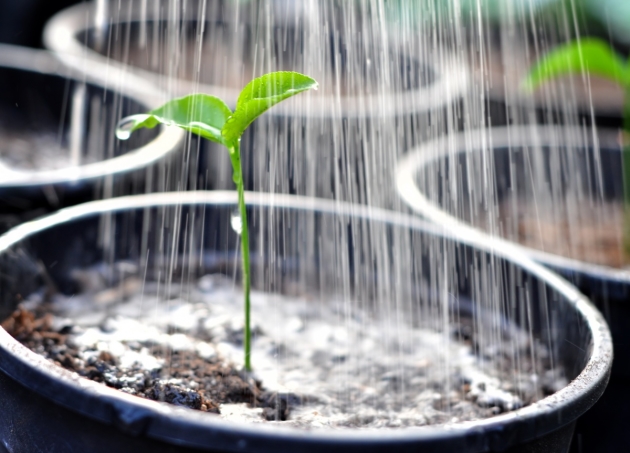
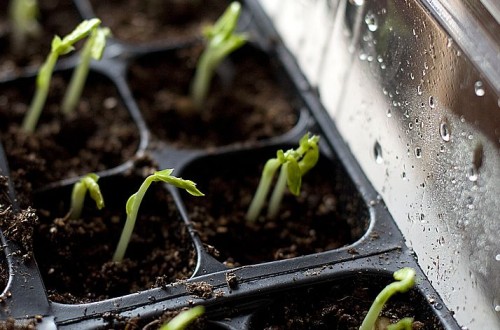
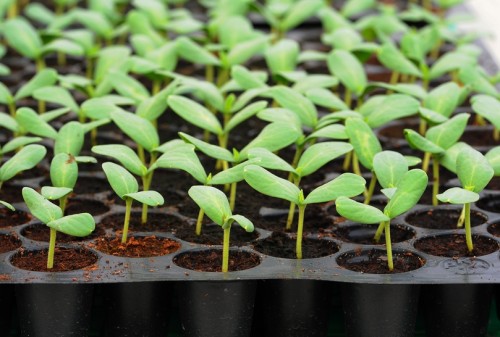

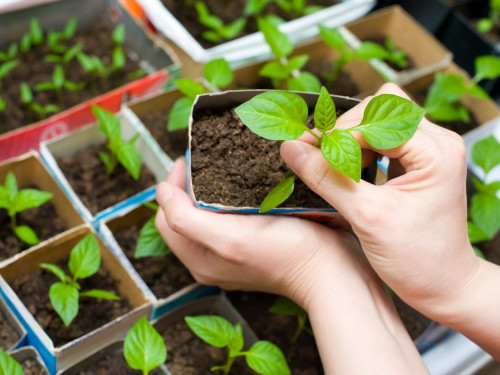
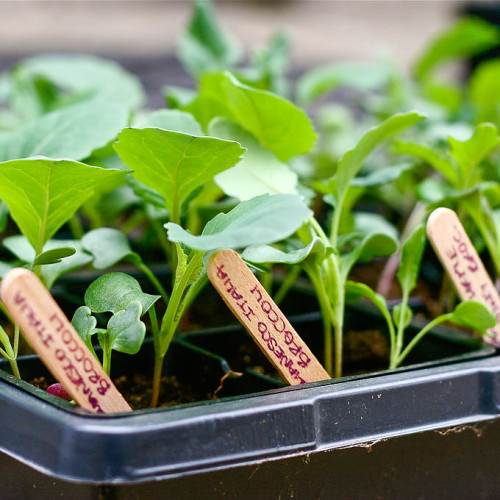
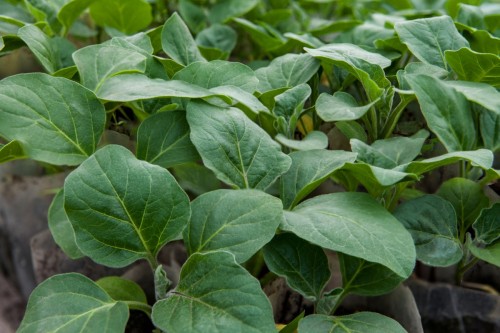
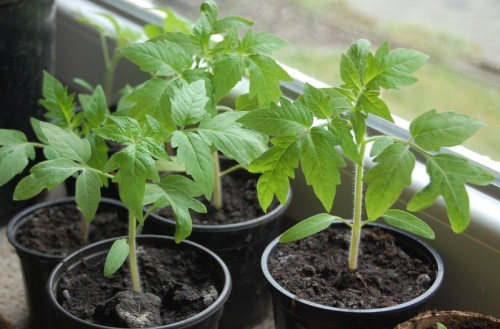
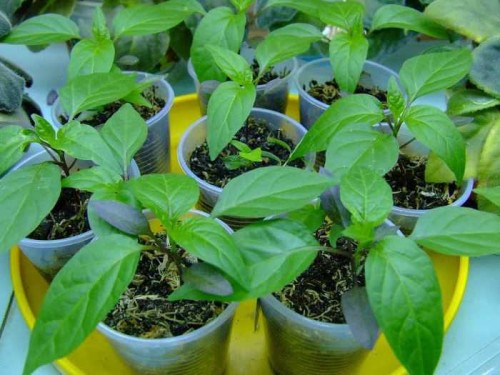
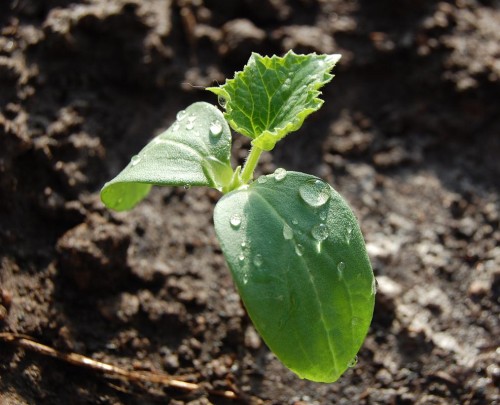












 Start a discussion ...
Start a discussion ...